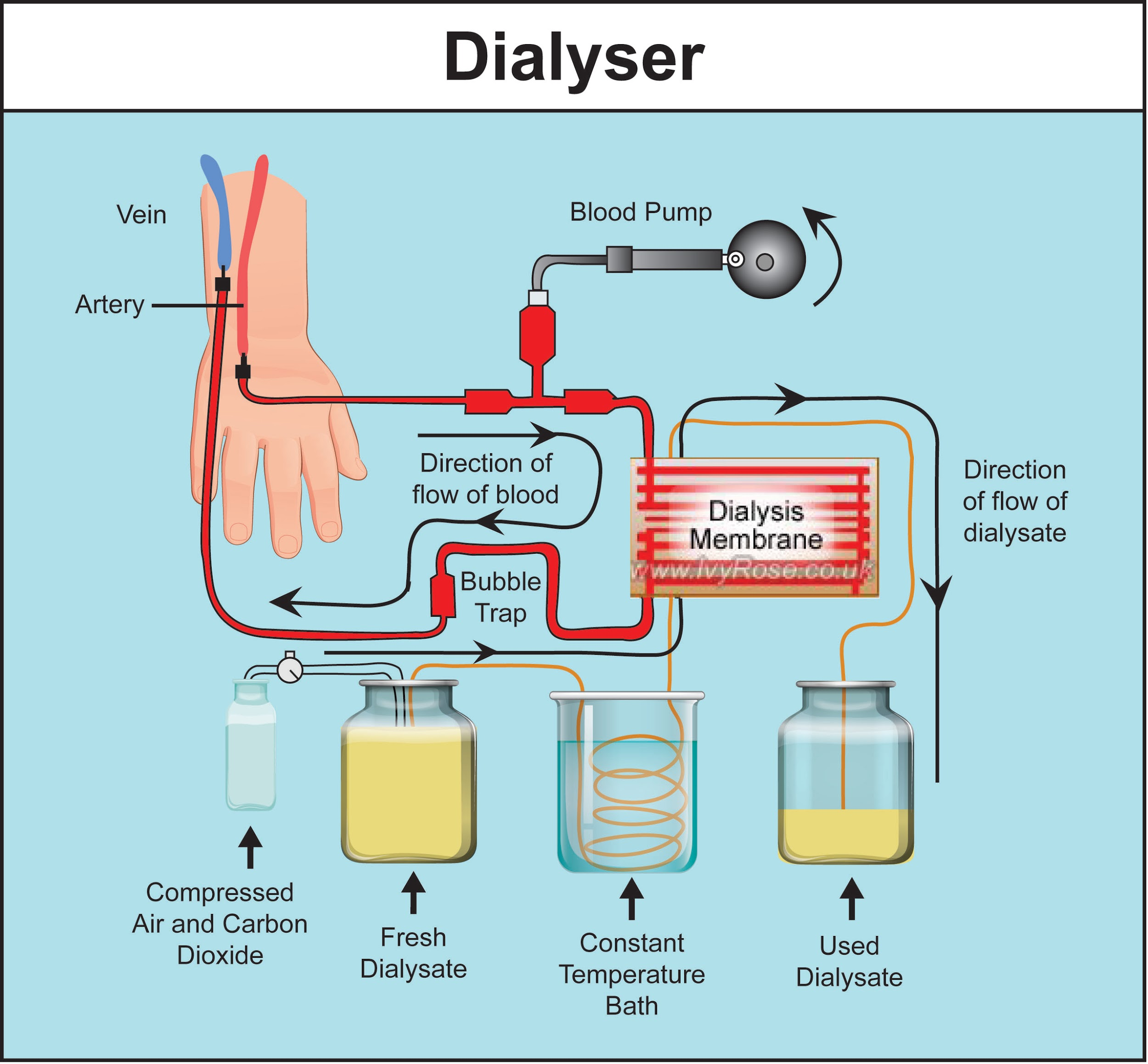
- If the kidneys fail, toxic substances build up in the body until cells and organs begin to deteriorate and eventually die.
- Many tens of thousands of people around the world suffer from kidney failure, but a large number of them are leading relatively normal lives because of the successful use of the artificial kidney or hemodialysis therapy.
Working mechanism:
- The principle of diffusion is basic to the working mechanism of the artificial kidney.
- Very simply, the artificial kidney is a machine that pumps 5 to 6 liters of blood from the body through a hollow fiber dialyzer.
- The blood is rinsed by a briny solution, and sodium, potassium, and waste products such as urea, uric acid, excess water, and creatinine diffuse through the dialyzer by osmotic pressure.
- The cleansed blood is then routed back into the body.
Procedure:
- One tube is permanently implanted into an artery (usually in the arm), and another is implanted into a nearby vein.
- During dialysis, the tubes are hooked up to the machine.
- Blood is pumped from the artery through an oxygenated salt solution similar in ionic concentration to body plasma.
- Because the concentration of wastes is higher than the normal concentration of the plasma-like fluid, the wastes automatically diffuse through the semipermeable membrane of the tubes into this rinsing fluid.
- The membrane is porous to all blood substances except proteins and red blood cells.
- The wastes are eliminated from the body, and the purified blood is free to flow back into the body.

Source: https://nephcure.org/hemodialysis/
- Dialysis is sometimes also used to add nutrients to the blood. For instance, large amounts of glucose may be added to the salt-solution so that the glucose may be diffused into blood at the same time that wastes are being removed.
- It takes about 6 hours and 20 passes through the bathing fluid to complete a full cycle of dialysis, and most patients receive treatment two or three ties a week.
- Unfortunately, even this highly successful machine, which can remove wastes from the blood 3o times faster than the natural kidney does, provides only partial relief for kidney-failure victims. All patients remain uremic (urine in the blood) to some degree.
Alternative method:
- Another method is peritoneal dialysis, which uses the patient’s peritoneal membrane instead of an artificial membrane for diffusion.
- The ‘clean’ fluid (dialysis fluid) is injected into the peritoneal cavity each day for 3 to 4 days. Three daytime exchanges remain in the body for 5 hours each before they are removed, and the fourth overnight exchange remains in the body for 8 to 10 hours.